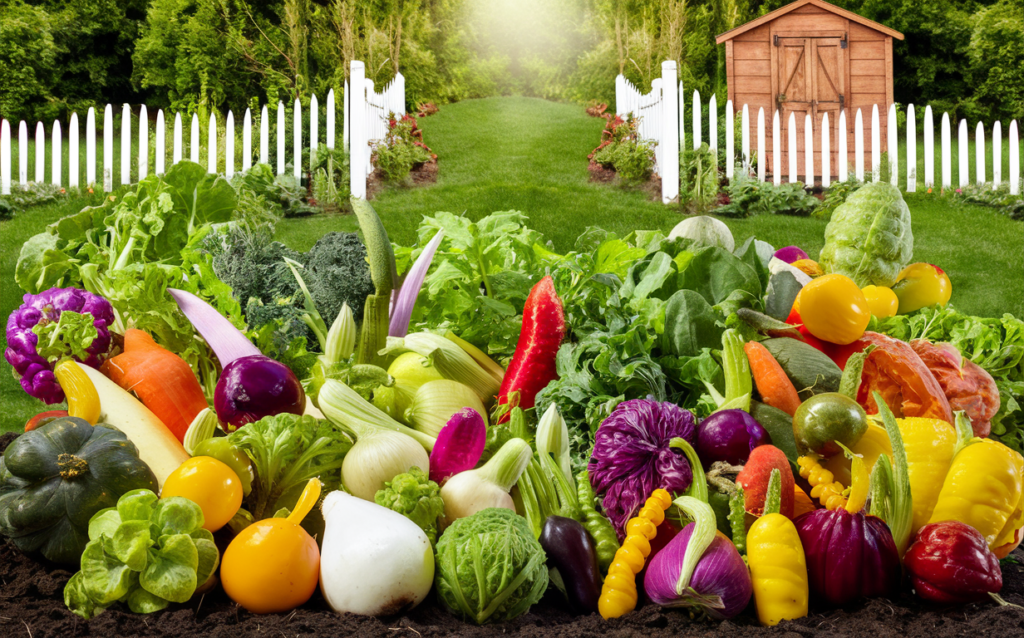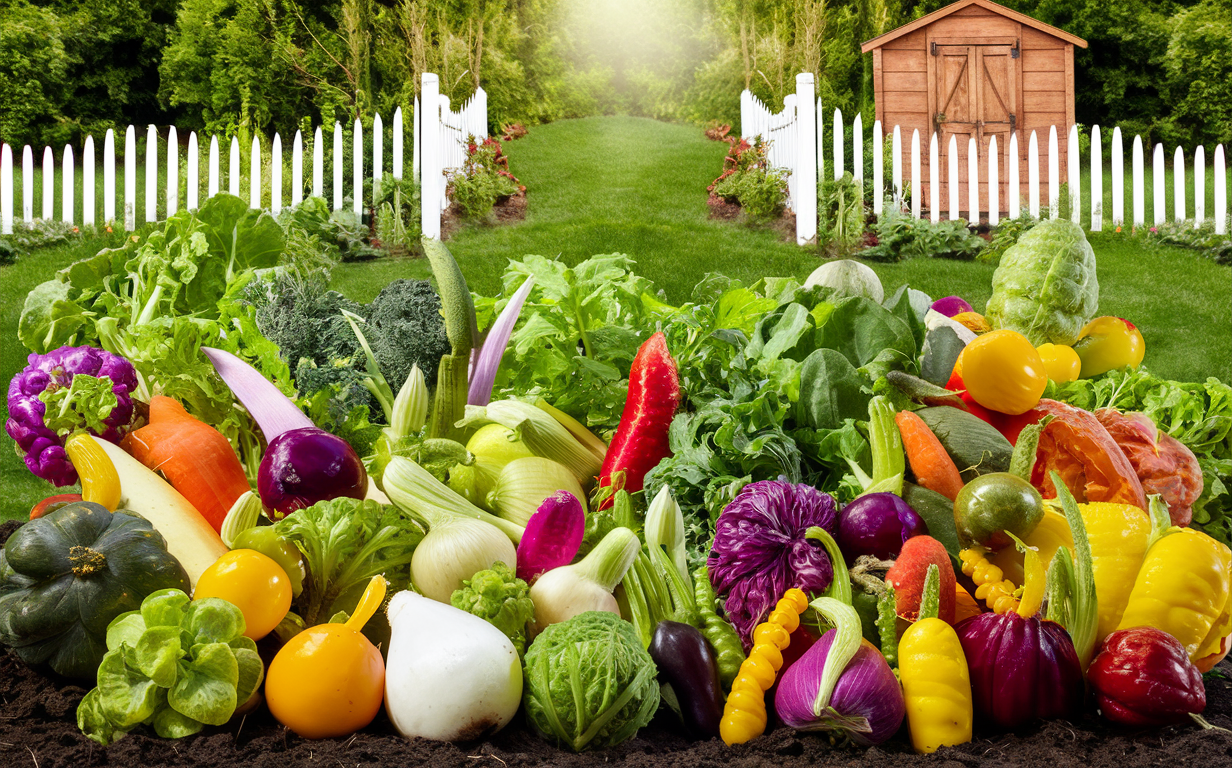Table of Contents
Introduction
Vegetables are an important part of a healthy diet. They are low in calories and fat, and high in vitamins, minerals, and fiber. Eating plenty of vegetables can help reduce the risk of chronic diseases such as heart disease, stroke, type 2 diabetes, and some types of cancer.
There are many different types of vegetables, each with its own unique nutritional profile. Some of the most popular vegetables include carrots, broccoli, spinach, tomatoes, and potatoes.
Vegetables can be eaten raw, cooked, or steamed. They can be added to salads, soups, stews, and casseroles. They can also be used as a side dish or snack.
Eating vegetables is a delicious and easy way to improve your health. So make sure to include plenty of vegetables in your diet every day!
Benefits of Eating Vegetables
Vegetables are an important part of a healthy diet. They are low in calories and fat, and they are a good source of vitamins, minerals, and fiber. Eating vegetables can help you maintain a healthy weight, reduce your risk of chronic diseases like heart disease and cancer, and improve your overall health and well-being.
Some of the specific benefits of eating vegetables include:
- Reduced risk of heart disease
- Reduced risk of cancer
- Improved blood sugar control
- Improved digestion
- Increased energy levels
- Better skin and hair
- Boosted immunity
If you are not getting enough vegetables in your diet, there are a few simple ways to increase your intake. You can:
- Add vegetables to your meals at home.
- Choose vegetables as snacks.
- Order vegetables when you eat out.
- Try new vegetables.
- Cook vegetables in different ways to find ones you enjoy.
Eating vegetables is a great way to improve your health and well-being. Make sure to include plenty of vegetables in your diet every day 3. Types of Vegetables
There are many different types of vegetables, each with its own unique nutritional value and flavor. Some of the most common types of vegetables include:
- Leafy greens, such as spinach, kale, and lettuce
- Cruciferous vegetables, such as broccoli, cauliflower, and Brussels sprouts
- Root vegetables, such as carrots, potatoes, and beets
- Squash and pumpkins
- Tomatoes, peppers, and cucumbers
- Beans and legumes
- Mushrooms
Vegetables are a great source of vitamins, minerals, and fiber. They are also low in calories and fat, making them a healthy addition to any diet.
When choosing vegetables, look for fresh, brightly colored produce. Avoid vegetables that are wilted, bruised, or have brown spots.
Store vegetables in a cool, dry place. Most vegetables will keep for several days in the refrigerator.
To cook vegetables, there are many different methods to choose from. Some of the most popular methods include:
- Steaming
- Boiling
- Roasting
- Sautéing
- Grilling
Vegetables can be added to a variety of dishes, such as salads, soups, stews, and casseroles. They can also be used as a side dish or snack.
Eating a variety of vegetables is a great way to improve your health. Vegetables are a source of essential nutrients, and they can help you maintain a healthy weight and reduce your risk of chronic diseases.
How to Choose Vegetables
When choosing vegetables, there are a few things to keep in mind.
First, look for vegetables that are fresh and have a bright color. Avoid vegetables that are wilted, bruised, or have brown spots.
Second, choose vegetables that are in season. Seasonal vegetables are typically more flavorful and nutritious than those that are out of season.
Third, consider the size of the vegetable. Smaller vegetables are often more tender and flavorful than larger vegetables.
Finally, choose vegetables that you enjoy eating. If you don’t like the taste of a particular vegetable, you’re less likely to eat it, which defeats the purpose of eating vegetables in the first place.
Here are some tips for choosing specific types of vegetables:
- For leafy greens, look for leaves that are dark green and free of yellow or brown spots.
- For root vegetables, choose vegetables that are firm and have no soft spots.
- For cruciferous vegetables, such as broccoli and cauliflower, look for vegetables that are bright green and have a tight head.
- For tomatoes, choose tomatoes that are ripe and have a deep red color.
- For peppers, choose peppers that are firm and have a bright color.
By following these tips, you can choose vegetables that are fresh, nutritious, and delicious.
How to Store Vegetables
This is a clean, modern take that is easy to read at a glance.
Maximize Freshness: A Guide to Storing Vegetables
Extend the life and nutrition of your produce with these simple storage solutions.
General Principles
- Temperature: Store in a cool, dark place (35°F-45°F), typically the refrigerator’s crisper.
- Moisture: Keep vegetables dry to prevent rot. Pat them dry before storing.
- Containment: Use airtight containers or bags to protect from air and prevent cross-flavoring.
Specific Vegetable Guide
| Vegetable Type | Where to Store | Special Instructions |
|---|---|---|
| Leafy Greens | Refrigerator Crisper | In a perforated plastic bag. |
| Broccoli, Cauliflower | Refrigerator | In a sealed plastic bag. |
| Carrots, Potatoes, Beets | Cool, Dark Place (Pantry) | |
| Tomatoes | Room Temperature | |
| Melons & Most Fruit | Cool, Dark Place |
By following these guidelines, you can significantly reduce waste and enjoy your vegetables at their peak.
How to Cook Vegetables
There are many different ways to cook vegetables, and the best way to cook them will vary depending on the type of vegetable. Some vegetables, such as carrots and broccoli, can be steamed, roasted, or boiled. Other vegetables, such as zucchini and summer squash, are best grilled or sauteed.
Here are some tips for cooking vegetables:
- Start with fresh, high-quality vegetables.
- Cut vegetables into uniform pieces so that they cook evenly.
- Steam, roast, or boil vegetables until they are tender-crisp.
- Grill or saute vegetables until they are slightly charred and softened.
- Season vegetables with salt, pepper, herbs, and spices to taste.
For more information on how to cook vegetables, please see the following resources:
- How to Cook Vegetables (The Spruce Eats)
- How to Cook Vegetables (BBC Good Food)
- How to Cook Vegetables (Martha Stewart)
Vegetable Recipes
Here are some delicious and easy vegetable recipes to try:
- Creamy Vegetable Pasta
- Roasted Vegetable Salad
- Sheet Pan Vegetables with Feta and Herbs
- Vegan Shakshuka
- One-Pot Pasta with Vegetables and Feta
Vegetable FAQs
Here are some common questions about vegetables:
- What are the different types of vegetables?
- How do I choose vegetables?
- How do I store vegetables?
- How do I cook vegetables?
- What are the benefits of eating vegetables?
For more information on these topics, please see the following sections:
- Types of Vegetables
- How to Choose Vegetables
- How to Store Vegetables
- How to Cook Vegetables
- Benefits of Eating Vegetables
Conclusion
Vegetables are an important part of a healthy diet. They are low in calories and high in nutrients, including vitamins, minerals, fiber, and antioxidants. Eating a variety of vegetables can help to improve your overall health and well-being.
If you are not a big fan of vegetables, there are many ways to make them more palatable. You can try roasting them, steaming them, or adding them to soups or salads. You can also try dipping them in hummus or guacamole.
With so many different types of vegetables to choose from, there is sure to be something that you enjoy. So make sure to include plenty of vegetables in your diet for a healthier, happier you!”




